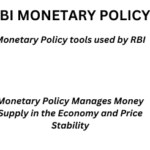Recently the government unveiled the National Capital Goods Policy.discuss the challenges and way out for capital good sector of india in the context of policy?

Capital goods industry forms the backbone of the manufacturing activity.
Capital goods; plant machineries for agricultural, industrial and commercial segments of economic activities that have economic asset life of over three years; as those comprising plant and machinery, equipment / accessories required for manufacture / production, either directly or indirectly, of goods or for rendering services, including those required for replacement, modernization, technological upgradation and expansion. It also includes packaging machinery and equipment, refrigeration equipment, power generating sets, equipment and instruments for testing, research and development, quality and pollution.
The capital goods sector is of strategic importance to the Indian economy:
- is a prerequisite for propelling the growth of the manufacturing sector
- It has a multiplier effect on the overall economic growth as it facilitates development for a broad base of user industries by providing critical inputs, i.e. machinery and equipment necessary for manufacturing.
- the development of domestic capabilities in the capital goods sector is essential to ensure self reliance, as the sector directly or indirectly influences core manufacturing development within India.
- All these are key inputs and have a strong bearing on the performance of the country’s manufacturing sector.
India has a strong and diverse base of capital goods, primarily an outcome of the country’s import substitution policy followed particularly post-independence period. Some of the prominent capital goods produced in India include heavy electrical machinery, textile machinery, machine tools, earthmoving and construction equipment including mining equipment, road construction equipment, printing machinery, dairy machinery, industrial refrigeration, and industrial furnaces. As per the report ofInternational Yearbook of Industrial Statistics, 2014, UNIDO,Global exports of capital goods stood at US $ 2.6 trillion and the largest exporter of capital goods in the year 2012 was China, followed by Germany, USA , Japan. India stood at the 28th position, with a share of 0.6% in total world exports of capital goods. The major importers were USA, China , Germany. India stood at the 17th position, with a share of 1.8% in total world imports.
CHALLENGES/ ISSUES
While the demand for capital goods in the country has been witnessing a consistent increase, domestic capital goods manufacturers have not been able to keep up with the pace of demand, leading to increasing dependence on imports across market segments.
Technological Competency: The technologies (design capability, application innovation, and process innovation) used for production, assembly of some of the sub-segments of Indian capital goods sector, are not always updated in tune with the global technological trends. In addition, the technological competencies of SME players, who provide components or intermediates to original equipment manufacturers, are also limited. Transfer of technology from other developed countries has also not been significant;the products by indigenous manufacturers are not always cutting edge; often there exists a large technology gap between domestic and foreign manufacturers of capital goods, leaving user industries with little recourse other than importing them in some of the sub-segments of capital goods for several equipment categories.
Delivery Schedules Most capital goods are not supplied off-the-shelves and are custom-made to suit the requirements of end users. Thus, the delivery schedule to cater to the order is longer, longer than their foreign counterparts, than many other engineering products. However, due to various reasons, including capacity constraints, the delivery schedules of Indian capital goods suppliers are.
The quality of infrastructure (transport, communication and power) is inadequate, thus affecting competitive delivery schedules, and increasing the operating costs. Overall, the infrastructure inadequacies translate into cost disadvantage for Indian capital goods manufacturers vis-a-vis foreign manufacturers.
Low R&D Intensity; Low spending on research and development by capital goods sector. there is still a lot of room for increasing R&D expenditure so as to reduce import dependence.
Inverted duty structure refers to a situation where final product attracts less duty than inputs that go into manufacturing of that product; major inputs for production of the capital goods attract higher customs duty than finished products. This discourages local manufacturing and value addition, hence putting the domestic capital goods sector at a disadvantage.
WAY OUT
Encourage private sector investment in technology and innovation; for high greenfield FDI inflows and greater focus on R&D by Indian companies. Indian investment in R&D is largely government driven. Indian firms need to be encouraged to invest in R&D which will make them technologically strong.. Proactive policies(financial and fiscal incentives) are required that incentivize industry efforts to invest in innovation and develop new products; would help promote greenfield FDI inflows into this sector, facilitating technology transfer and capacity development in the domestic manufacturing; to have strategic takeovers to acquire critical technologies, in order to bridge the technology gap, as also capacity gap. development of the next generation of industrial machinery.Such new generation machines should have greater flexibility to produce a variety of products and also create opportunities for offering engineering services that are less sensitive to business and cyclical fluctuations
Strengthening Technological Competencies In order to enhance productivity, product quality and operating efficiency, for modernization of capital goods industry,to help the players in the Indian capital goods industry in tracking global trends in product and process technologies, with specific objective of cost control, besides enhancing productivity, energy efficiency, eco friendliness, product quality, operating flexibility and efficiency;enhance the usage of information technology that provides convenience to the customers, and help enhance customer base and provide new avenues for profitability.
revisiting the existing capital investment ceiling of MSMEs; With such low level of investment ceiling, MSMEs in capital goods sector are either expanding laterally or engaging themselves in low-tech/low-value products. Since the manufacturing operations in capital goods industry are capital intensive, investment ceiling for treatment of medium enterprises may be raised at least in the capital goods sector, encouraging capital intensiveness, technology upgradation, quality improvement, export orientation and employment generation.
Cluster Development Approach; advantages in promoting the growth of a particular sector or industry;can achieve high levels of competitiveness ensuring complementarities, common facilities, collective activities including collective sourcing and marketing. Since majority of the firms in the capital goods sector are SMEs, they would also benefit from working in a cluster. Clusters can be useful in such situations by increasing supply chain responsiveness because of manufacturing consolidation near the suppliers.
Public procurement should have preference for local manufacturers. from outside only in the event that “the goods, construction or services needed are not available within the territory of the People’s Republic of China or, though available, cannot be acquired on reasonable commercial terms” or “where the items to be procured are for use abroad”. There is also a clearly stated preference for domestic innovation.
Promotion of Intelligent Manufacturing Significant engineering skills, with the combination of hardware, software and system integration skills are required in the evolution stage of advanced technology products. This niche area is called
Intelligent manufacturing. These are usually high tech products which provide high value addition but low volumes in highly quality conscious capital goods sector. India has a competitive advantage in this sector where a large proportion of value addition is through software and system integration. governments, where investments may be encouraged through fiscal and financial instruments. Hi-tech manufacturing is region-neutral and does not require large land area .the investments could potentially benefit in long term if the units are profitable through job creation, additional investments and eventually more revenues (through both direct and indirect taxes). There would also be spin-off benefits, viz. creation of ancillary segments supplying to the large hi-tech goods producing units.
Skill development Skilled manpower is required in two different categories. The first relate to provision of skilled people only from the point of view of strengthening competitiveness and economic growth, but also from the point of addressing the requirement of long-term national security. They include basic research and directed applied research
The capital goods sector derives majority of its demand from the manufacturing sector. Share of manufacturing sector in India’s GDP is still low. However, given the Government of India’s focus (MAKE IN INDIA) and vision to increase the share of the manufacturing sector to 25% of GDP, there remains a significant upside going forward. It is felt that select strategies;encouragement of private sector in R&D and innovation, strategic takeovers, cluster development approach, redefining investment caps for SMEs and focussed investment in hi-tech capital goods sector, will go a long way in boosting the performance of capital goods sector and help it achieve the projected growth.





0 Comments